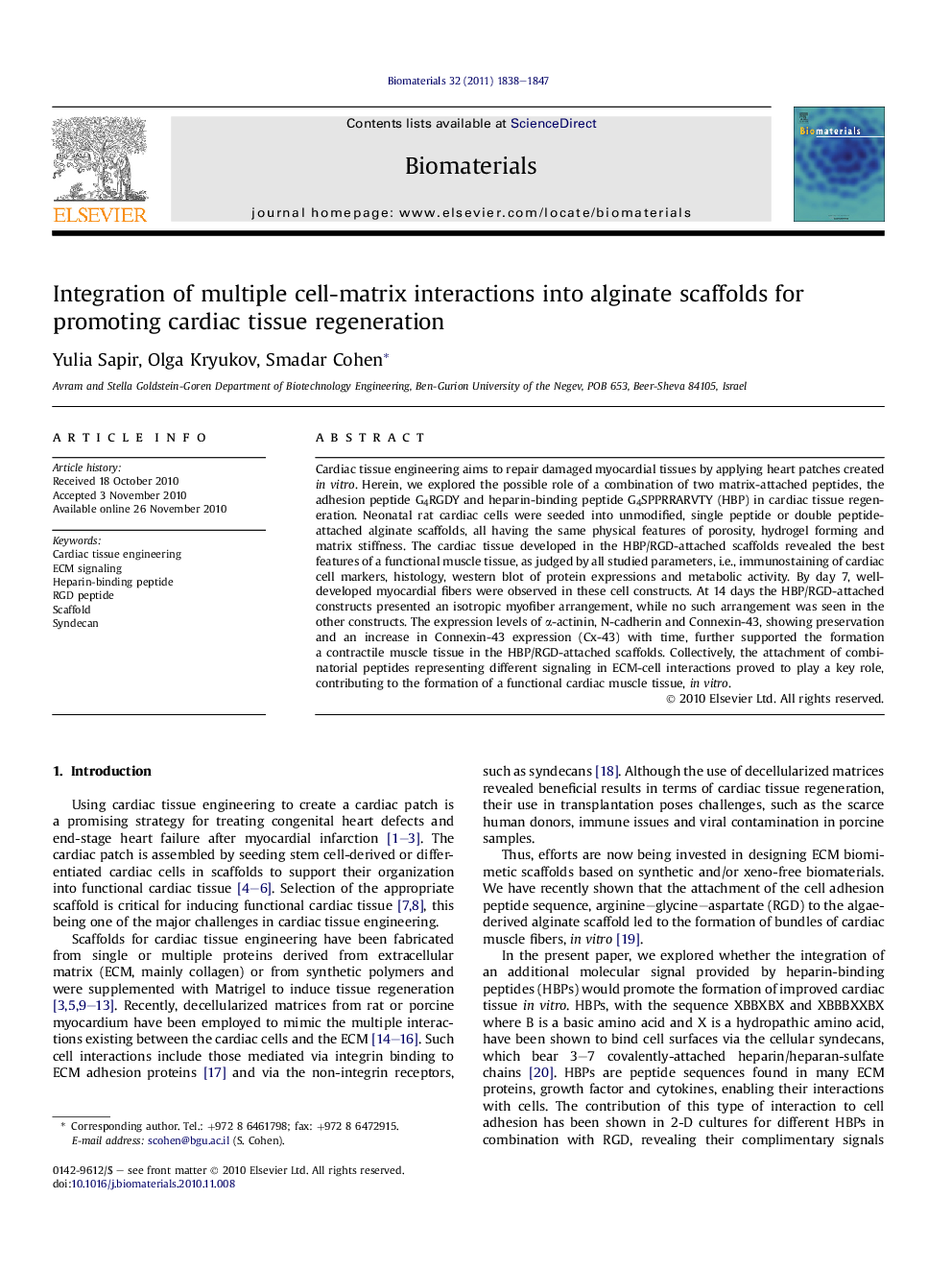| کد مقاله | کد نشریه | سال انتشار | مقاله انگلیسی | نسخه تمام متن |
|---|---|---|---|---|
| 8158 | 579 | 2011 | 10 صفحه PDF | دانلود رایگان |

Cardiac tissue engineering aims to repair damaged myocardial tissues by applying heart patches created in vitro. Herein, we explored the possible role of a combination of two matrix-attached peptides, the adhesion peptide G4RGDY and heparin-binding peptide G4SPPRRARVTY (HBP) in cardiac tissue regeneration. Neonatal rat cardiac cells were seeded into unmodified, single peptide or double peptide-attached alginate scaffolds, all having the same physical features of porosity, hydrogel forming and matrix stiffness. The cardiac tissue developed in the HBP/RGD-attached scaffolds revealed the best features of a functional muscle tissue, as judged by all studied parameters, i.e., immunostaining of cardiac cell markers, histology, western blot of protein expressions and metabolic activity. By day 7, well-developed myocardial fibers were observed in these cell constructs. At 14 days the HBP/RGD-attached constructs presented an isotropic myofiber arrangement, while no such arrangement was seen in the other constructs. The expression levels of α-actinin, N-cadherin and Connexin-43, showing preservation and an increase in Connexin-43 expression (Cx-43) with time, further supported the formation a contractile muscle tissue in the HBP/RGD-attached scaffolds. Collectively, the attachment of combinatorial peptides representing different signaling in ECM-cell interactions proved to play a key role, contributing to the formation of a functional cardiac muscle tissue, in vitro.
Journal: Biomaterials - Volume 32, Issue 7, March 2011, Pages 1838–1847